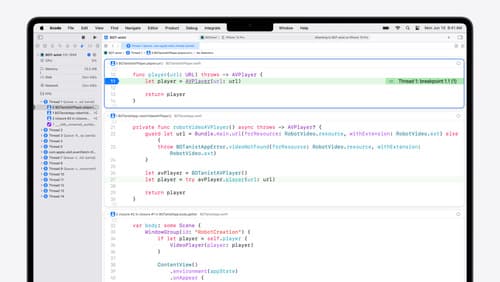What is Macro?
Asked on 2024-09-06
1 search
In the context of Apple's WWDC, a "macro" in Swift is a flexible tool that acts as a compiler plugin. It takes the syntax tree as input and returns transformed code as output. Macros are used to extend the capabilities of Swift by allowing developers to write code that can be transformed at compile time, providing a way to automate repetitive tasks or introduce new language features.
For more detailed information on macros, you can refer to the session titled "A Swift Tour: Explore Swift’s features and design" where macros are discussed. If you're interested in learning more about how macros can be used in testing, the session "Meet Swift Testing" also covers the use of macros like expect and require for testing purposes.

What’s new in Xcode 16
Discover the latest productivity and performance improvements in Xcode 16. Learn about enhancements to code completion, diagnostics, and Xcode Previews. Find out more about updates in builds and explore improvements in debugging and Instruments.

What’s new in AppKit
Discover the latest advances in Mac app development. Get an overview of the new features in macOS Sequoia, and how to adopt them in your app. Explore new ways to integrate your existing code with SwiftUI. Learn about the improvements made to numerous AppKit controls, like toolbars, menus, text input, and more.

What’s new in USD and MaterialX
Explore updates to Universal Scene Description and MaterialX support on Apple platforms. Discover how these technologies provide a foundation for 3D content creation and delivery, and learn how they can help streamline your workflows for creating great spatial experiences. Learn about USD and MaterialX support in RealityKit and Storm, advancements in our system-provided tooling, and more.
